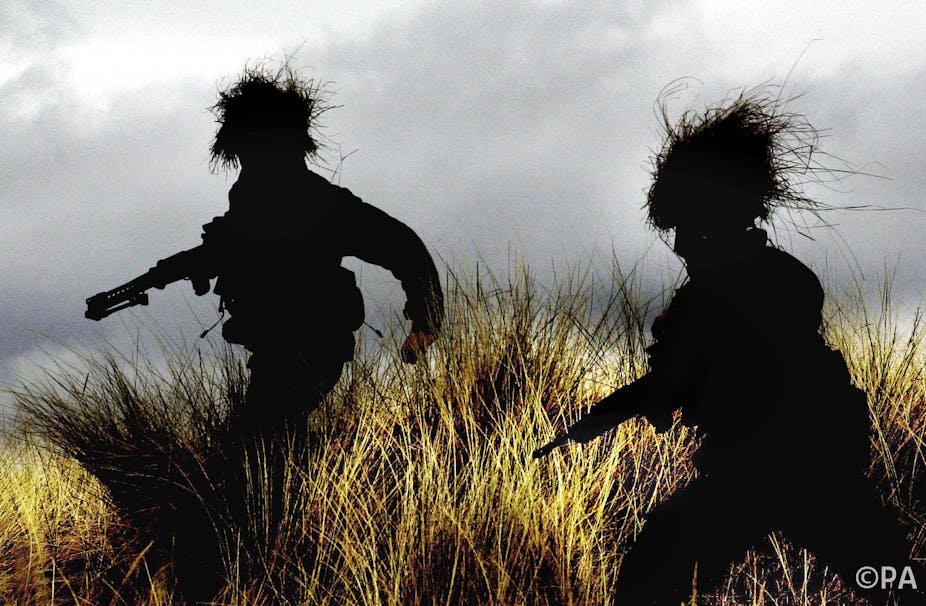The Scottish government’s commitment to a post-independence defence and security budget of £2.5 billion, “exceeds most of the earlier predictions” and would place it in the top six of NATO countries for spending per head on the armed forces (based on 2011 defence budgets). Maintaining defence spending at around 1.7% to 2.0% of GDP would also very much buck the trend in Europe.
Since the end of the Cold War, overall defence spending has been decreasing in Europe. Although it affects the armed forces of larger and smaller states in different ways, fewer resources coupled with the reduced political will to spend on defence is evidently transforming armed forces for the majority or perhaps even all European states. This is such a worrying trend that some believe Europe is faced with the choice to either organise its defence more effectively or to renounce its capability. With this in mind, the final overall capability in Scotland could yet be well below the stated ambitions of the current Scottish government.
Bottom line, the central choice that Scotland would face in the long term would be whether to keep a balanced force or make the difficult decision towards specialisation and niche capabilities. The former would take a sizeable resource commitment and the latter both strong political leadership and strategic vision.
Missing the target
The current literature on the prospective SDF has been fashioned in two ways. Either it has compared other countries in Scotland’s geographical neighbourhood (Norway, Sweden, Belgium, Ireland) or it has used proportionality ratios to envisage what defence assets an independent Scotland would be able to negotiate out of the current UK inventory. Both methods are fundamentally flawed, although understandably so given the lack of information available when they were written.
The problem with the first approach is that although large armed forces in states with large strategic ambitions tend to reflect each other, the same cannot be said for smaller militaries. As one official responsible for defence transformation in one of those so-called “comparable” European states put it to me, “When you look at armed forces with fewer than 25,000 soldiers, they will all be completely different. They do not resemble big armies and they do not even resemble each other.”
The problem with the second approach is that when developing a state’s defence force, you must first construct a foreign policy and then develop your defence forces to meet that vision. You do not start with your assets and capabilities then build your ambition from there. An understanding of what an independent Scottish foreign policy would look like has moved on somewhat since the release of the White Paper Scotland’s Future, but it is still far too generic and “operationally meaningless” to form the basis of developing a capabilities catalogue. It also does not help that defence in Europe is becoming renationalised to a certain extent.
Twinned approach
Above all, Scotland has no history of making these types of strategic decisions. For smaller countries, there often needs to be a trade-off between not being able to do anything substantial versus being able to do something but with less autonomy. Given that an independent Scotland would essentially be creating its armed forces and defence policy from scratch, built-in bilateral cooperation would be its best bet for realistic and sustainable defence policy planning. But what could that look like?
Two examples could be in-air policing and naval collaboration. For instance, an independent Scotland could be responsible for air policing both at home and in parts or even across all UK airspace. An arrangement like this would potentially free up some UK aircraft, meaning it could maintain its expeditionary capability and an independent Scotland could provide aircraft that are less technologically advanced and therefore less expensive. It would also mean that a SDF could contribute to EU Common Security and Defence Policy or NATO burden-sharing in a realistic way. Because the ships remain under one flag and command, it permits the sovereign decision-making while still allowing for synergies to develop.
Of course, an arrangement like this necessitates both countries using the same type of vessels. If an arrangement could be established where the yards on the Clyde service both governments, this would also mean less disruption to the current defence industrial infrastructure. This could also benefit BAE Systems especially given the recent decision to close the Portsmouth yards. There are foreseeable obstacles, but future Scottish defence planners should heed the fact that naval cooperation with the Dutch actually allows Belgium to retain capabilities that it could not do otherwise.
Another option would be for the Scottish government, either alone or together with the UK government, to consider dual-use capabilities. For example in New Zealand, upgrades to the Orion patrol aircraft were co-financed with the agriculture, immigration and policing ministries.
The irony here is that bilateral defence arrangements between an independent Scotland and the rest of the UK would entail cobbling together provisions that are already present under the status quo. One need only talk to the Czech and Slovak defence planners to understand how difficult it is to adopt new defence and security agreements that were already in place before the divorce, such as air defence, a new common border and sharing sensitive information. But should Scotland go its own way, both it and the UK would have much to gain by cooperating. In short, if bilateral cooperation were built into Scottish defence policy planning from the outset, it would at least help to keep the proverbial (and actual) ship afloat.

